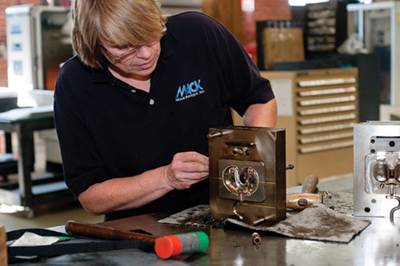Reshoring Efforts Conquer Time-to-Market Crunch
Challenges in time compression, complexity, communication and cost force project back to the States.
Quirky.com is not your ordinary OEM that works with moldmakers and molders to bring a product to market. Much like its name, it is an unusual company—half design firm/half manufacturer that gives inventors who don’t know how to get their products to market an online community with which to communicate and successfully launch products (see Sidebar, page xx). Recently, the company embarked on a mission to keep production of a new product in the United States.
Mack Molding (Arlington, VT) is a supplier of plastic injection molding and contract manufacturing services with core competencies that include part design, prototyping, engineering, custom injection molding, finishing operations, full-service machining, sheet metal fabrication, total product assembly and supply chain management. Mack and Quirky President Ben Kaufman had worked together in the past. When Kaufman had a vision to manufacture in the U.S. rather than overseas, he contacted Mack to set the wheels in motion.
Mack places a high value on its relationships with its tooling providers and has developed a robust Approved Vendor List (AVL), which includes moldmakers. The most important criteria moldmakers on Mack’s AVL must meet are quality, price and on-time delivery. When Kaufman outlined the project—which was a crate system, much like plastic milk crates used to store items that are prevalent in college dormitory rooms, but with the option to add pieces like drawers, hooks, legs and a dry erase board—with an eight-week window of getting the product on Target shelves, Mack knew exactly which moldmaker to approach, as it was already mid-April and Kaufman needed the product on Target shelves by June.
Getting Started
Mack approached L&Z Tool & Engineering Inc. (Watchung, NJ)—a manufacturer of plastic injection molds and die casting dies. The company has been in business for more than five decades and produces all of its products in the United States, according to L&Z Tool President Thomas LaMarca. “We chose L&Z for a number of reasons,” says Larry Walck, Mack’s Business Development Director. “First, their location was directly between New York and Vermont. Two, their longevity and their reputation are stellar. They are known as one of the premier tool shops in the industry—especially when you get into high complexity mid- to large-size tools. The third thing they offered was their commitment to the program. They dove in, rolled up their sleeves and treated it like it was their own project.”
Quirky came to Mack with early conceptual models and renderings. From there, Quirky, Mack and L&Z collaborated to develop what would turn into eight high-volume, steel production molds for high-pressure injection molding.
“These were pretty complex and substantial molds and products.—not straightforward at all,” Walck notes. “The price of a high-end product demands superior cosmetics and performance. All of the supporting accessories needed to have that same level of sophistication and design. Every aspect of the molds needed to be perfect. So, those five to six weeks of build time—with the amount of tools and the complexity and size of tools—was just insane.”
L&Z’s LaMarca agrees. “A project of this nature would have normally taken us 14 to 16 weeks,” he notes. “This was very compressed. That was the first challenge of many throughout which we delivered a mold—which is our job. However, our job is also to make sure the mold has an extended life cycle and can produce an acceptable production level in each shot per hour.”
Multiple holes are designed into the walls and base of the crate for both form and function. “All of the holes had to be universal in size so that any molded accessory could fit into any hole,” Walck explains. “Likewise, all of the accessory components had to have the same base diameter.” Draft was critical for component fit-up, as was material shrinkage, which had to coincide with the amount of shrink of the part on the mold.
The thick walls of the crate also posed a challenge. While necessary for strength, they also made part ejection difficult, especially because the open end has a flange around the entire perimeter, Walck maintains. “By designing draft into the tool, coupled with a glass-filled resin selection, we made part removal easier and allowed for a thin-wall lip around the opening while still maintaining strength,” he says.
While L&Z was tweaking the tool design into final configuration, Mack was simultaneously performing FEA analysis and material analysis. “We were doing so much concurrently to take time out of the process,” adds Walck, “even to the point of asking L&Z not to touch certain sections of the tool until those design segments were finalized. For example, one small section of the tool had to be saved for a logo that was not yet completed. While this can be risky, we are both industry veterans and capable of making these types of predictions—which proved vital to a concurrent, evolutionary design and tool build.”
A Matter of Time
Walck and LaMarca agree the biggest challenge was time—or lack thereof.
L&Z Tool found it had to keep all operations in-house due to the time constraints on the project. “We like to keep high-end craftsmanship in-house and concentrate our tool making efforts in doing more close tolerance tool work,” LaMarca notes, “and leave things like mold bases to the experts who specialize in that. We really became totally integrated with this project and did everything in-house, which we are capable of doing. We worked around the clock to produce the molds in a timely fashion.”
The two companies operated hand in hand through the process. “So much was done in a short amount of time,” LaMarca states. “There were constant reviews, we were implementing lots of things in the mold like inserts for cooling, determining which components would help deliver a better mold, etc. We had to really hone this project and delegate to spread the work out. Dimensionally we had to be extremely accurate, so that at the end of the day when it came time for assembly we didn’t have to do a lot of hand fitting or adjustments. It was very important to work with very close tolerances.”
Walck adds that on any given day, L&Z worked to shorten its schedules. “For example, they would ask us to change part geometry in the mold from an EDM burning operation to a milling operation,” he says. “We would review it, get it approved by Quirky, and then do it. Every day there were design or manufacturing challenges, and we conquered them all.”
Fortunately, this moldmaker and molder work so well together that no rework of the tool was necessary. Walck attributes this, in part, to daily updates as well as robust document control systems that were used to control all files, revisions and changes—and to accurately communicate those changes between parties so they could be implemented properly. “We did one or two enhancements to the tools once we were finished with the initial runs,” Walck says. “For example, after running about 30,000 parts, we decided to get the tool plated. We opted not to plate it initially because of time; but by plating it after the initial orders were completed; we were protecting the tool for the long run.”
“To have completed this project so fast—tools completed and sampled, parts shot on the eighth cycle and no rework—despite an evolving design and three partners, was nothing short of amazing!” LaMarca emphasizes. Indeed, the two companies seem to have developed a mutual admiration over the course of their collaboration. “We couldn’t have picked a better team to work on this project,” Walck adds. “We have always had high regard for L&Z and have worked with them before, but more so with this project. They were working 24 hours in their shop, seven days a week.”
LaMarca has similar high praise for Mack. “We finished the driving tool, the main crate mold, a few days before schedule,” LaMarca recalls. “Our truck driver arrived at Mack at about 4 o’clock in the morning. As he approached Mack, he couldn’t believe it when the lights went on, door opened up, and in excess of 50 people were waiting for the tool. They jumped on our truck and helped remove it. They put it on the press and began molding it and then did assembly as well. You just don’t see this level of cooperation and smoothness. Mack did a great job!”
Reshoring Rewards
Both Walck and LaMarca agree that this project would not have been successful if undertaken on foreign soil. “We probably saved 20 to 30 percent making it here in the states over China—forgetting anything else—the freighting of the tools back and forth would have to go air,” Walck notes. In addition, he points out that language barriers and the time difference would have had a negative impact. “We were making engineering changes two or three times in a day—because of something discovered in an FEA or a slight material change, for example,” he states. “But when you have all of your partners in the same time zone and within two hours driving distance of each other, it really was the only way to manage the project.”
LaMarca is in complete agreement. “This project could have never been accomplished overseas due to the tremendous amount of communication between L&Z Tool and Mack,” he affirms. “Every day something came up: questions regarding fit, changes, strength issues of the product, etc. They had to be dealt with on a daily basis and communication was within a small geographical sphere. We had the ability to converse and exchange information immediately. In this regard, things were seamless and flawless—a total team effort.”
For More Information:
Mack Molding / (802) 375-0783
larry.walck@mack.com / mack.com
L&Z Tool & Engineering, Inc. / (908) 322-2220
tomlamarca@lztool.com / lztool.com
Quirky.com / 866-QUIRKY
questions@quirky.com / quirky.com
Facebook for Design
Since its initial launch in 2009, Quirky is a hotbed of product development. Its website allows its staff and visitors to choose the products the company will manufacture, based on proposals from potential inventors. The online community can “chat” with Quirky product design staff. If the product is selected to be developed by Quirky, the person who submitted the idea receives royalties—as well as those who had a say in the product. Larry Walck, Business Development Director for Mack Molding, calls it “Facebook for design” and notes it is a young, avant-garde firm.
Related Content
How to Improve Your Current Efficiency Rate
An alternative approach to taking on more EDM-intensive work when technology and personnel investment is not an option.
Read MoreMaking Quick and Easy Kaizen Work for Your Shop
Within each person is unlimited creative potential to improve shop operations.
Read MoreThe Role of Social Media in Manufacturing
Charles Daniels CFO of Wepco Plastics shares insights on the role of social media in manufacturing, how to improve the “business” side of a small mold shop and continually developing culture.
Read MoreThe Trifecta of Competitive Toolmaking
Process, technology and people form the foundations of the business philosophy in place at Eifel Mold & Engineering.
Read MoreRead Next
Achieving High Value Customer Relationships
Mack Molding details how it cultivates relationships with its mold manufacturers and how these collaborations better serve its OEM customers.
Read MoreReasons to Use Fiber Lasers for Mold Cleaning
Fiber lasers offer a simplicity, speed, control and portability, minimizing mold cleaning risks.
Read MoreAre You a Moldmaker Considering 3D Printing? Consider the 3D Printing Workshop at NPE2024
Presentations will cover 3D printing for mold tooling, material innovation, product development, bridge production and full-scale, high-volume additive manufacturing.
Read More
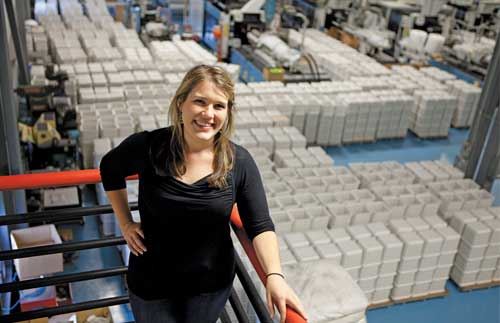
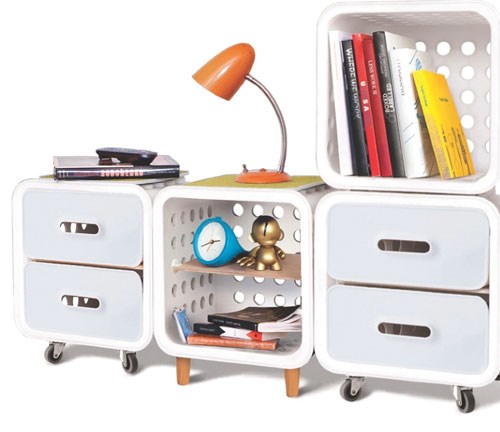
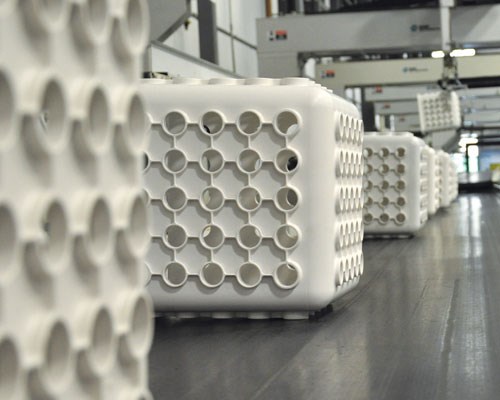
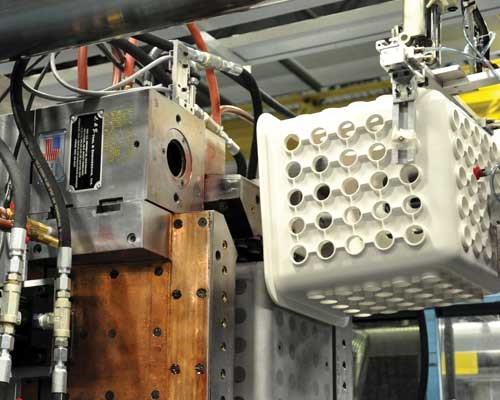
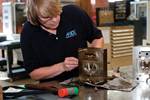












.jpg;maxWidth=300;quality=90)




